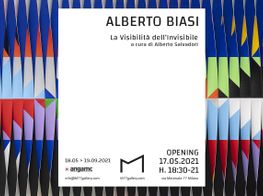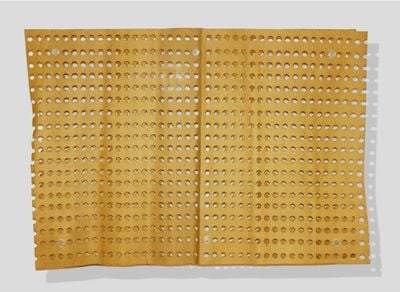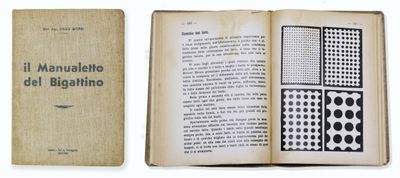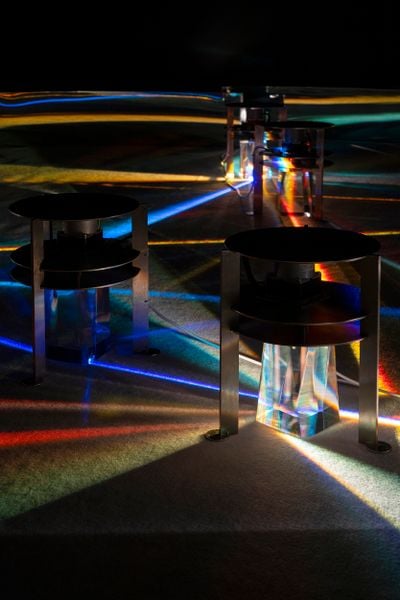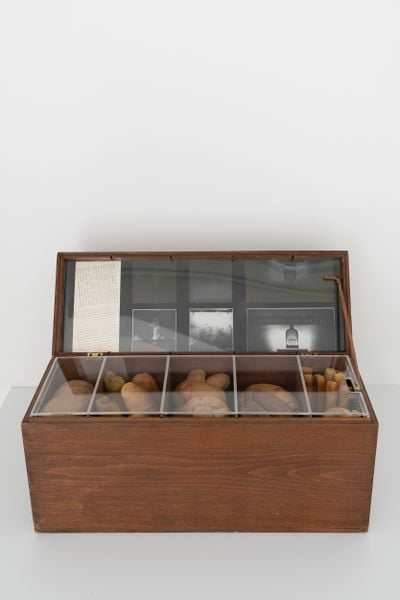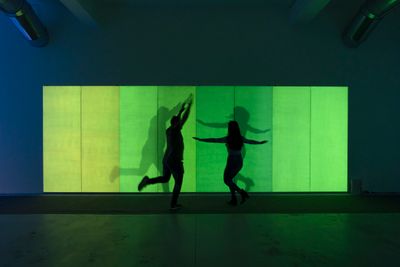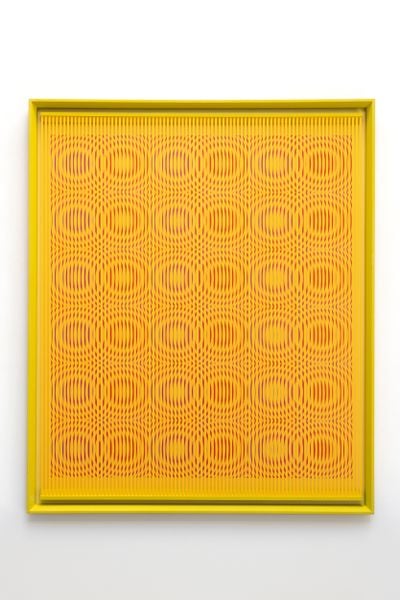Alberto Biasi’s Magic Touch
Alberto Biasi recounts being entranced, as a young boy, by glimmers of light that spilled through the shutters to his bedroom wall at night. Such scenes of ordinary magic would infuse his later geometric constellations.

Exhibition view: Alberto Biasi, The Visibility of the Invisible, curated by Alberto Salvadori, M77, Milan (17 May–19 September 2021). Courtesy Alberto Biasi Archive and M77. Photo: Lorenzo Palmieri.
Made up of thin strips of canvas, metal, or PVC superimposed onto a second surface, Biasi's dynamic assemblages played a key part in the development of post-war Italian art. Born in 1937 in Padua, where he still lives and works today, Biasi developed an interest in art and science from a young age.
'I've always believed that art and science are projected in the direction of something that remains to be discovered,'1 the artist has explained. Such curiosity infused his earliest series, known as 'Trame' (1959–1961), in which sheets of gauze or perforated papers are superimposed to create optical forms through an interplay between light and dark.
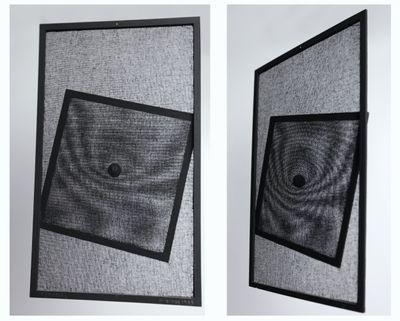
The series was developed from a seminal moment when, working on a silkworm farm in the summer of 1959, the artist was struck by the patterns that arose when he overlaid silkworm 'beds' made from paper and punctuated with small holes over their surface. Such combinations of art, nature, and innovation constituted a universalism that defined Biasi's outlook at the time.
Enrolled in an industrial design course at the Instituto Universitario Di Architettura of Venice, he and his fellow pupils were swept up in post-war idealism that prioritised collective over individual artistic output—a view that differentiated the artist's practice from the work of his friend and contemporary Lucio Fontana, whose slashed canvases also played with space. Where 'Fontana's gestures 'came from something internal,' Biasi notes his works were 'rational and logical'.2
Of true inspiration to Biasi was Venezuelan Op artist Rafael Soto, whose works made from overlapped metal grills that gave a feeling of kineticism the artist had witnessed at the Venice Biennale in 1958.
Throughout the early 1960s, Biasi developed his own dynamic interplays with light and form, including his 'Light Prisms' (1962–1967), in which a ray of white light passes through a crystal prism that breaks it down into different colours, which then passes onto faceted blocks of rotating plexiglass. Surrounded by mirrors that accentuate this play of light, Biasi's 'Light Prisms' were inspired by spotlights he witnessed as a child during the Second World War.
This 'breaking down' of the light spectrum likened the artist's work to the Futurists' fracturing of the picture plane, as well as the Dadaist approach to objective chance.
Chance and innovation were further explored by Gruppo N—a group founded by the artist in 1960 alongside Manfredo Massironi. With Gruppo N, Biasi defined a new method of 'programmatic art', which embraced openness and variability.
Gruppo N's approaches to exhibition-making held a Dadaist sensibility, as exemplified by Closed Exhibition in 1960, where a closed door presented a sign reading 'Closed exhibition, nobody is invited to show, the premises will be closed for the entire duration of the show'—a form of protest against individualistic artistic presentation. In a similar vein, the artists' 1961 Bread Exhibition staged an exhibition of edible objects created by a fictitious baker.
The group disbanded in 1967, but such participatory elements continued to inform Biasi's practice, where twisting lamellas of materials such as PVC and alcantra fabric undulated under the shifting gaze of the viewer.
In his 'Ambienti', Biasi developed these interactions to encompass entire rooms, four of which are included the artist's solo exhibition at M77 in Milan, curated by Alberto Salvadori (The Visibility of the Invisible, 17 May–19 September 2021), in which Savadori seeks to highlight the 'Dada approach and playful pleasure' that is present in these works.
Included is the artist's 1974 installation Tu sei, part of the environment Io sono, tu sei, egli è (1972–1973), which marked the artist's move towards more ephemeral materials. Comprising a photo-sensitive wall, the participant's shadow appears for a few moments before it disappears.
By and large, Biasi's artworks became increasingly minimal through the 1990s, with the experimentation of tracks, shadows, and reliefs leading to subtle visual interferences and more painterly references, as seen in the 'Assemblaggi' series.
In these later works, Biasi mastered a lightness of touch that emphasises the viewer's experience. 'Rational and logical' Biasi's approach may be, it is such rigour that has enabled his work's enduring magic. —[O]
1 Alberto Biasi interview (part two), Mayor Gallery, London, 29 October 2014, https://vimeo.com/113484095
2 'Alberto Biasi', DAMN° Magazine, 2015, https://www.damnmagazine.net/calendar/alberto-biasi/


